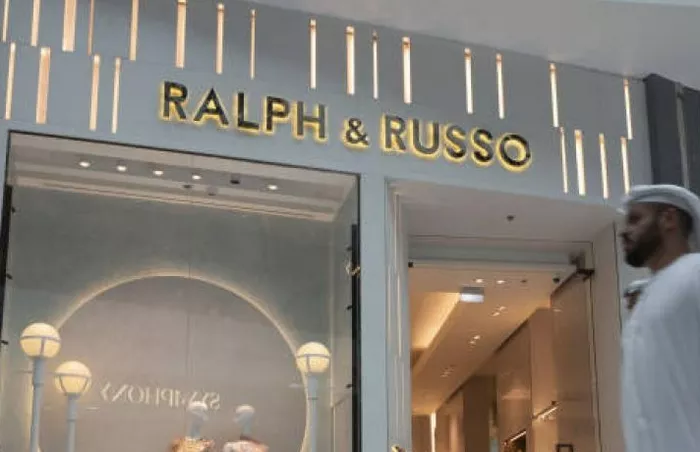The global fashion industry is experiencing a severe crisis, marked by widespread store closures and mounting financial strain. Luxury brands, often seen as resilient due to their elite clientele and high price points, are now among the hardest hit as a deepening global recession continues to erode consumer spending power. One of the most notable names currently facing serious trouble is Ralph & Russo, a luxury fashion house that has recently filed for Chapter 11 bankruptcy protection in the United States and is working to reorganize its finances, according to The Times.
In the United Kingdom, Ralph & Russo is once again teetering on the brink of collapse, only three years after narrowly avoiding disaster. The haute couture label announced on April 14, 2025, that it would be appointing administrators, initiating a legal process that shields the company from creditor actions for ten days. This move follows a history of financial instability. In 2021, the brand underwent a similar situation and was eventually sold for £3.5 million to Retail Ecommerce Ventures, a firm headed by American entrepreneurs Tai Lopez and Alex Mehr. Despite that acquisition, financial difficulties have persisted, leaving the brand’s future once again in doubt.
Ralph & Russo, which was founded in 2010, quickly rose to prominence in the luxury market and became a favorite among celebrities and global fashion icons. High-profile appearances, such as Angelina Jolie donning their designs on red carpets, helped cement its status as a premium couture label. The company currently operates exclusive boutiques in international fashion capitals like Dubai, Miami, New York, and Paris — locations that often serve customers by appointment only. However, this aura of exclusivity has not been enough to protect the brand from the sweeping challenges plaguing the luxury retail industry.
The broader luxury fashion sector is undergoing one of its most turbulent periods in decades. Major global brands, some of which have enjoyed longstanding industry dominance, are now grappling with bankruptcy filings, large-scale store closures, and drastic organizational restructuring. The economic reverberations of the COVID-19 pandemic continue to haunt the industry, affecting every level from flagship stores to online retail operations. The high-end fashion business, once seen as immune to downturns, is proving vulnerable in the face of rising inflation, labor costs, and interest rate pressures.
Consumer behavior during the pandemic saw a sharp decline in demand for luxury apparel as travel bans, canceled events, and stay-at-home mandates reduced the need for formal and upscale clothing. Though restrictions have since eased, the recovery has been slow and uneven. Inflation and financial uncertainty have only compounded the issue, making even well-established fashion houses vulnerable. Smaller luxury labels and independent designers are struggling even more under the weight of these economic pressures.
Other notable casualties in the luxury space highlight the extent of the damage. In April 2023, David’s Bridal filed for Chapter 11 bankruptcy for the second time in under five years. With a gloomy outlook on formal events, the company began seeking buyers to offload its assets in hopes of survival. The decline of this once-dominant player in the wedding industry sent ripples throughout the formalwear segment.
Then, in January 2024, Paris-based fashion boutique Anne Fontaine followed suit by filing for Chapter 11 in New York. Known for its crisp, white garments and understated elegance, the brand never fully recovered from the pandemic’s impact. Anne Fontaine opted to restructure under Subchapter V of Chapter 11, a provision designed to help small businesses more easily navigate financial recovery.
Ted Baker Canada, a regional offshoot operating several upscale fashion lines including Lucky Brand and Brooks Brothers in Canada, also succumbed to the pressures of a weakened retail environment. In April 2024, the company began restructuring under Canadian insolvency laws and simultaneously filed for Chapter 15 bankruptcy in the United States. The decision to close all its North American retail locations signaled yet another blow to the already fragile luxury retail landscape.
Some of the turmoil in the industry has gone beyond finances into legal complications. McMullen, a boutique luxury fashion outlet, filed for bankruptcy in August 2024 shortly after being sued by fellow retailer Moda Operandi. The lawsuit centered on alleged unauthorized use of copyrighted promotional images, which escalated into a costly legal conflict that ultimately led to McMullen’s collapse.
With Ralph & Russo now joining the list of struggling luxury brands, the fashion world is confronting a harsh reality: prestige and popularity no longer guarantee survival. As economic uncertainty continues to loom, the luxury sector must contend with evolving consumer priorities and increasing financial volatility. The fate of Ralph & Russo remains uncertain, but its troubles underscore a broader crisis that has reshaped the industry — perhaps permanently.
Related Topics
- Rival Brand Slams Rapha’s New Women’s Bib Shorts for Lacking Bathroom Functionality
- Justin Bieber Sparks Skylrk Hype with Help from Gunna and Kai Cenat
- How Blooming Jelly Is Quietly Redefining Swimwear for TikTok Shoppers

